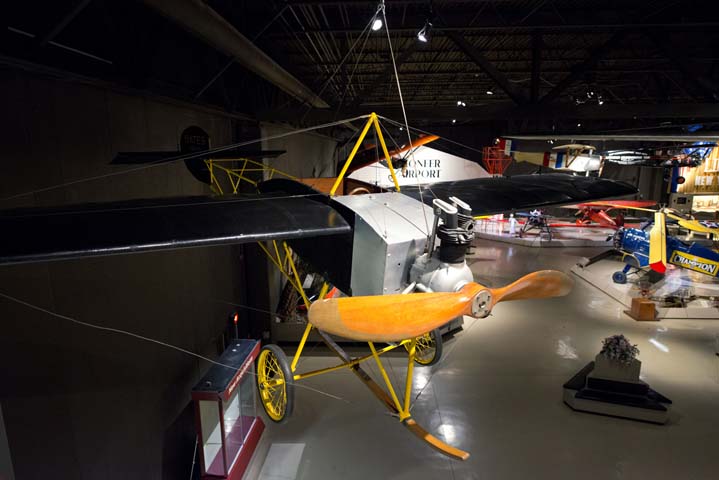1912 Bates Monoplane
Location: Pioneers of Flight
The 1912 Bates Monoplane was built by Carl S. Bates at Cicero Field near Chicago. Bates was a farm boy from Clear Lake, Iowa, who became interested in flying at an early age. He was only 14 when he constructed a man-carrying kite in 1898. In 1903, he moved to Chicago to attend the Armour Institute of Technology (now the Illinois Institute of Technology) and there came under the guidance of the famous aviation pioneer Octave Chanute.
Bates constructed his first airplane in 1908, patterned after the early Curtiss biplanes. He also built aircraft engines and gained a reputation for their lightness and reliability.
In 1911, he built a monoplane of original design, powered by a Bates 30-hp engine. The airplane in our museum collection is a redesign of that earlier aircraft. The Bates Monoplane is unusual in that the forward part of the fuselage is made of wood, while the structure aft of the cockpit is steel tubing. It has been described as a hybrid along the lines of the Nieuport, with a “pigeon-tail” empennage and a generous rudder. As displayed in the museum, the aircraft has a Poyer engine.
Walter Kutz of Skokie, Illinois, who later moved to Waterford, Wisconsin, purchased the aircraft in 1918. He stored the aircraft in a barn, but never flew it. In 1957, Leon Tefft, an EAA member, restored the aircraft for Kutz. After Kutz died, his family decided to loan the airplane to EAA for long-term display in the AirVenture Museum.



